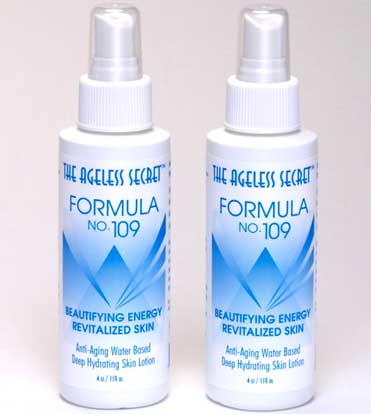It’s easy to get derailed from your regular fitness routine during the stressful, time-crunched, commitment-overload holiday season. Who has time to hit the gym for an hour four or five days a week when you have gifts to buy, gifts to wrap, places to go, people to see, trees to decorate, etc. You must prioritize if you want to make it through the holiday season without having a nervous breakdown; for many women, prioritizing means putting their fitness routine on the back burner in an effort to save sanity. The problem is, these reasonable and sane women risk entering the New Year in their fat-day pants. No, it’s not a thrilling thought to start the New Year with a new layer of body fat.
The solution is not to ditch your workout all together but rather find a more time-efficient, effective workout that you can realistically squeeze into the holiday madness. Even the busiest of busy can fit a 30-minute “stay at home” workout into their schedule three days a week. The trick to making the workout effective (and not just time-efficient) is to incorporate a mix of exercise training techniques that can increase EPOC (excess post exercise oxygen consumption) which amplifies the “after-burn”, stimulates the mitochondria within muscle cells to burn more fat, burns lots of calories and increases lean muscle mass to elevate the resting metabolic rate.
In the workout routine outlined in The Fitter, Firmer, Faster Program: Get a Killer Body without Killing Yourself (HCI Books, December 2006) the following nine exercise techniques are used to burn three times more fat than aerobic exercise and to help you get your best body in the least amount of time—-without ever leaving your house! Incorporate these training tips into your exercise routine and you’ll be entering the New Year in your skinny jeans.
- Go super-slow periodically. Super-slow resistance training is one of the safest, fastest ways to build strength and boost metabolism at the same time. Emphasizing the slow, downward (eccentric) phase of each exercise builds strength fast because this training technique recruits more muscle fibers per movement as compared with lifting and lowering your weights at a more rapid tempo.
- Go for Intensity. Exercising six days a week for an hour at a time is not necessarily the best way to get in shape. It’s much better to focus on quality verse quantity. You’ll achieve far better results training intensely for 30 minutes, 3 days a week compared to going slow and steady for an hour six days a week. A short but intense workout helps you gain more muscle and burn more calories not only during your workout, but also after your workout via EPOC (excess post exercise oxygen consumption). The more oxygen you train your body to consume, the more calories you will burn at rest; working out hard by incorporating high intensity aerobic-type intervals into your resistance training circuit is the most time-efficient way to boost your body’s ability to consume more oxygen and therefore burn more calories. Studies show you can reap significantly greater fat loss and significantly more metabolism-boosting muscle gain by performing short high-intensity workouts as opposed to longer-duration, lower intensity workouts.
- Jump rope. Rope jumping is intense exercise. It’s also a safe and low-impact exercise if done with proper form. Plus, it’s one of the few aerobic activities that can be done in the house with a very inexpensive apparatus. You can burn two and a half times the amount of calories jumping rope as you would burn doing brisk walking or stationary biking. Jumping rope increases your cardiovascular strength, improves your endurance, and tones both your upper and lower body simultaneously. Incorporate five 2-minute jump rope intervals into a 30-minute full-body workout and you’ll blast fat and burn mega calories.
- Focus on major muscles. On a percentage basis, your chest, back, and legs are the biggest muscle groups in your body. Focusing the majority of the time you spend exercising on these muscle groups will give you the most bang for your efforts and allow you to reshape your body in the least possible amount of time. Exercises involving your chest, back, and legs burn a lot of calories but more importantly, exercising these major muscles results in the greatest possible increase in your basal metabolism. Try to think in percentage terms. If you increase your strength in your back by 25 percent, that’s going to have a much greater effect on your basal metabolism than increasing the strength in your right bicep muscle by 25 percent.
- Incorporate compound movements. Compound exercise movements work multiple muscle groups simultaneously to maximize efficiency. By doing compound movements you can work smaller muscle groups such as your biceps while working larger muscles such as your thigh muscles at the same time. An example of a compound exercise is a leg lunge with a bicep curl. If you really want to get fit in the least amount of time, it’s best to avoid smaller muscle isolation exercises such as tricep extensions unless you’re doing them in conjunction with an exercise that works big muscles such as a squat. Certain exercises work multiple muscle groups by their very nature. For example, pushups work your chest muscles, your shoulder muscles, and your triceps concurrently and are therefore highly effective and highly efficient. Compound movements elevate your heart rate, burn lots of calories, strengthen your cardiovascular system, and rapidly build metabolically active lean muscle.
- Incorporate high repetition training. Most exercise trainers advise moderate repetition training for general fitness. “Moderate” means perhaps ten to fifteen repetitions of each exercise motion. While this is indeed a good rule of thumb we also support high repetition training, perhaps 20, or even 30 repetitions for some exercises to improve fitness and optimize fat loss. High repetition training stimulates the mitochondria within your muscle cells, helping increase their ability to process oxygen, and helping increase your body’s fat-burning capacity.
- Perform peripheral action heart training. Peripheral action heart training is a resistance training technique that conditions your cardiovascular system while simultaneously strengthening major muscles. By alternating between upper and lower body exercises your heart is forced to work extra hard to pump blood continuously to opposite ends of your body. For example, you might perform an exercise for your chest then move immediately to an exercise focusing on your lower body before going back to your upper body for your next exercise.
- Work your core. Core training exercises tone the “core” muscles of your hips, back, and abdomen. Exercising these muscles helps stabilize your spine and improves your posture. When you train your core muscles, you bring better alignment to the joints in your spine, warding off back pain and preventing low back injury. Core training also allows you to achieve the flattest abdomen possible because when you strengthen the muscles in your lower back, your entire midsection is pulled inward. Finally, training the deep muscles in your abdomen helps your entire body feel noticeably firmer and look significantly trimmer. The Fitter, Firmer, Faster workout includes a number of different exercises for the core muscles of your hips, back, and abdomen, including balancing poses that force your core muscles to work hard at keeping you upright.
- Do just one set. “Sets” refer to the number of times you perform a specified number of repetitions of one exercise before moving on to do a completely different exercise. For example, if you do 15 push-ups, then rest for 30 seconds, then do 15 more push-ups, then rest for 30 seconds, then do 15 more push-ups, you have completed three "sets" of push-ups. Performing three sets of each exercise is fairly common in the world of weight training. However, one set is sufficient to gain strength or maintain strength so long as you are exercising your muscles to fatigue. One set routines allow you to reach up to 80 percent or so of your genetic strength potential, which is perfectly fine if your goal is general fitness. It is true competitive athletes in training for sports requiring optimal physical strength can benefit from performing multiple sets. The downside, of course, is performing multiple sets of each exercise substantially increases the length of time you spend exercising. Unless you are an athlete in training, stick with one set to get Fitter, Firmer, Faster!
Ivy Larson is an American College of Sports Medicine certified health fitness instructor and the co-author of The Gold Coast Cure (HCI Books, May 2005) and The Fitter, Firmer, Faster Program (HCI Books, December 2006), which she wrote with her husband, Andrew Larson, M.D. You can visit Ivy and Dr. Larson at their website at www.goldcoastcure.com
LA Story .
>

